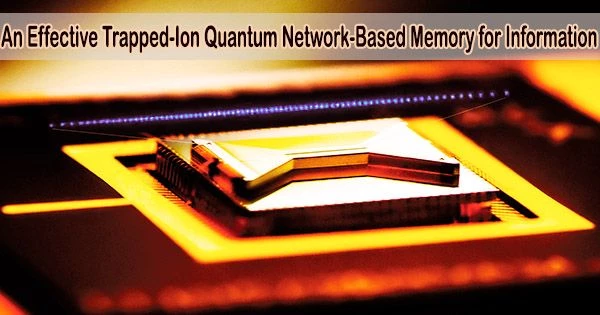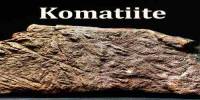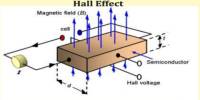Oxford University researchers recently developed a trapped-ion quantum network node with a built-in quantum memory. They discovered that their novel memory architecture, which was first described in an article published in Physical Review Letters, was exceptionally robust and could store data for extended periods of time despite constant network activity.
“We are building a network of quantum computers, which use trapped ions to store and process quantum information,” Peter Drmota, one of the researchers who carried out the study, told Phys.org. “To connect quantum processing devices, we use single photons emitted from a single atomic ion and utilize quantum entanglement between this ion and the photons.”
The most popular platform for implementing quantum calculations is trapped ions, which are charged atomic particles that are constrained in space by electromagnetic fields. On the other hand, the majority of the time, quantum information is transmitted between distant nodes via photons, or the light-related particles.
In order to develop more potent quantum technologies, Drmota and his colleagues have been looking at the prospect of mixing trapped ions with photons.
“Until now, we have implemented a reliable way of interfacing strontium ions and photons, and used this to generate high-quality remote entanglement between two distant network nodes,” Drmota said. “On the other hand, high-fidelity quantum logic and long-lasting memories have been developed for calcium ions. In this experiment, we combine these capabilities for the first time, and show that it is possible to create high-quality entanglement between a strontium ion and a photon and thereafter store this entanglement in a nearby calcium ion.”
It is difficult to integrate a quantum memory into a network node because more conditions must be met for such a system to function than for the development of a standalone quantum processor. The generated memory would need to be resistant to concurrent network activity most importantly.
One of the technical error sources that we face with trapped-ion qubits is dephasing due to magnetic field noise. Nevertheless, calcium-43 features transitions that are insensitive to magnetic fields, eliminating this error, hence boosting their coherence time. While strontium-88 is perfectly suited for generating photons for networking, it is sensitive to magnetic field noise.
Peter Drmota
“This means that the quantum information stored in the memory must not degrade while a network link is established,” Drmota explained. “This requires extreme isolation between the memory and the network, but at the same time, there also needs to be a fast and reliable mechanism that couples the memory to the network when needed.”
Drmota and his associates employed strontium and calcium, two distinct atomic species, to build their quantum memory since doing so allowed them to reduce crosstalk while building a network link.
They were also able to use in-sequence cooling and discover mistakes in real-time thanks to the minimized crosstalk in this mixed-species architecture. The memory and the network were missing a connection, which was made using mixed-species entangling gates.
“One of the technical error sources that we face with trapped-ion qubits is dephasing due to magnetic field noise,” Drmota said. “Nevertheless, calcium-43 features transitions that are insensitive to magnetic fields, eliminating this error, hence boosting their coherence time. While strontium-88 is perfectly suited for generating photons for networking, it is sensitive to magnetic field noise.”
The researchers transferred quantum information from the strontium to the calcium in the system, despite the fact that strontium-88 is known to be susceptible to magnetic field noise. This allowed them to sustain entanglement between their memory ion and a photon for a longer period of time. They were able to maintain this entanglement for over 10s, which is more than 1000 times longer than what they had previously seen between a photon and a bare strontium ion.
“Furthermore, the strontium ion can be reused to generate further entangled photons, and we show that this process does not affect the fidelity of entanglement between the memory and the previous photon, hence achieving robustness to network activity,” Drmota said.
“Notably, we managed to integrate the complexity associated with multiple challenging techniques, which have been developed in isolation in different setups over many years, in a single experiment.”
Drmota and his colleagues’ quantum memory underwent early testing, and the results were very encouraging. It was discovered to be highly resilient, maintaining entanglement between a trapped ion and photon for at least 10s. A significant step toward realizing distributed quantum information processing may have been taken with the team’s development of this quantum memory.
Using their design, individual quantum computational nodes can be loaded with a given number of processing qubits (i.e., calcium), while the network qubit (i.e., strontium) can then be used to create quantum links between distant modules.
In the end, this promising quantum memory may open the way for the development of scalable quantum computing systems since it eliminates the need for big, complex ion traps by using small modules that can process quantum information and connecting them to other modules.
“The robust quantum memory could be used in quantum repeaters, for private (blind) quantum computation, and is key for new developments in quantum communications, metrology and time keeping,” Drmota added.
“For example, for the nascent field of entangled atomic clocks, the long entanglement storage durations achieved in our experiments will lead to an order-of-magnitude improvement in the precision of frequency comparison between distant clocks.”
















